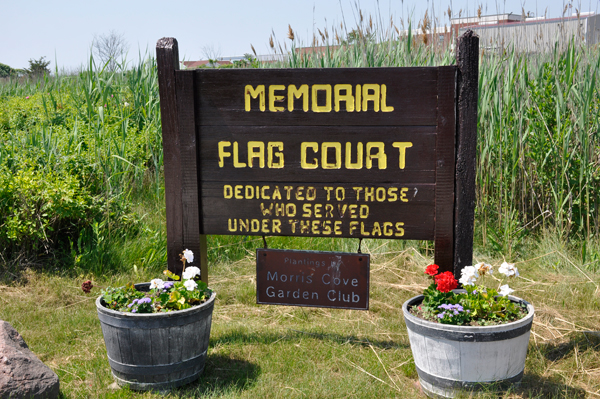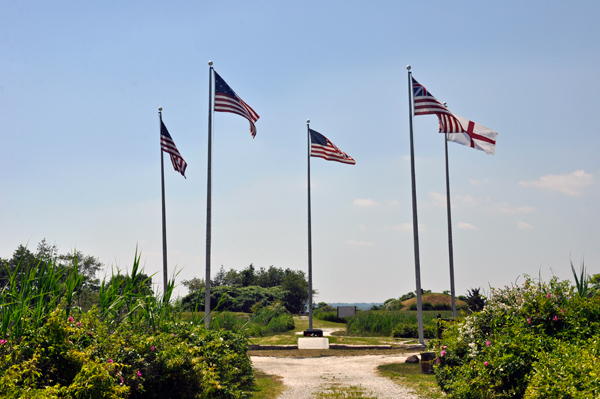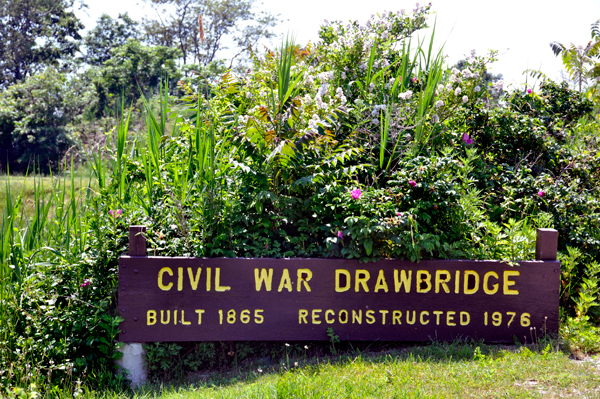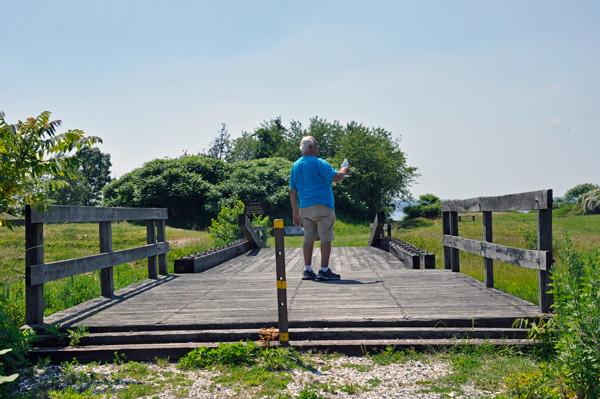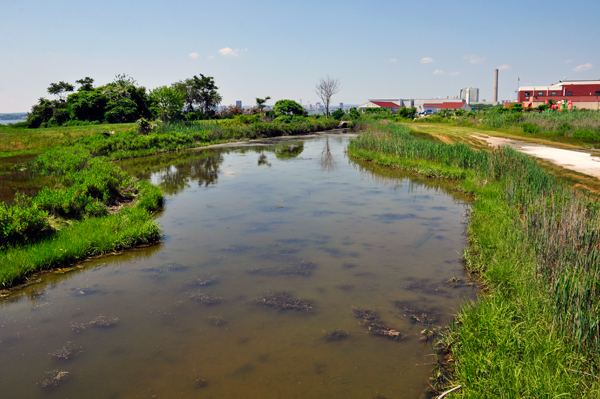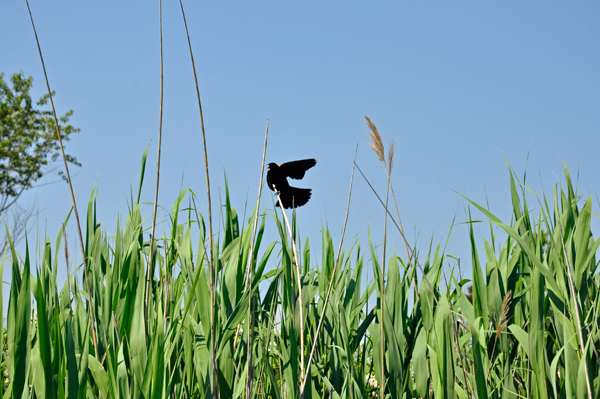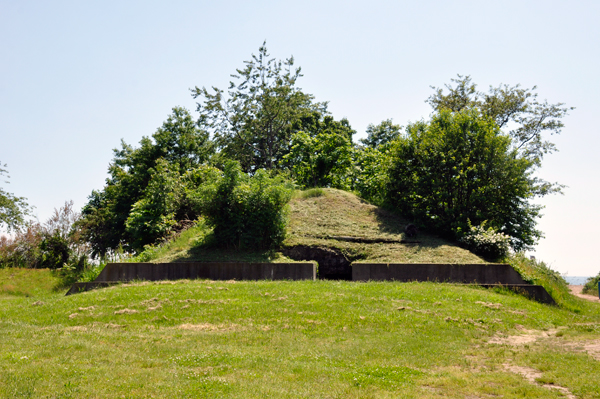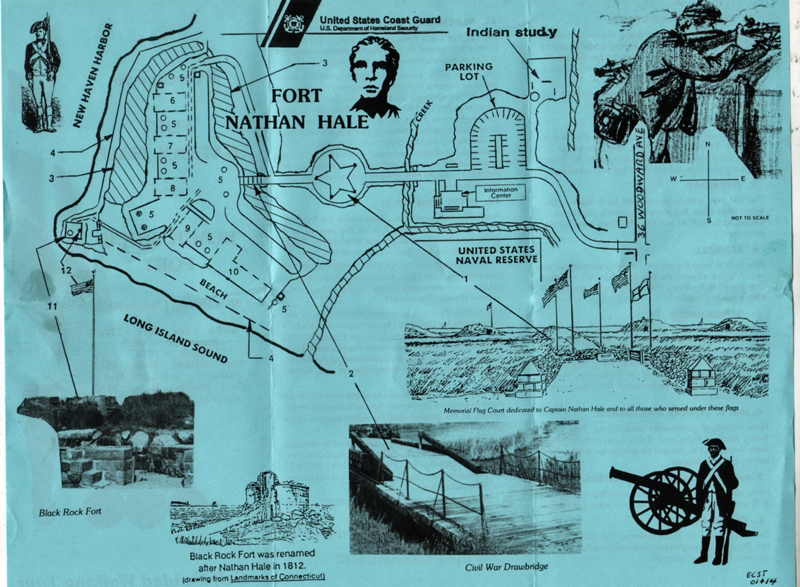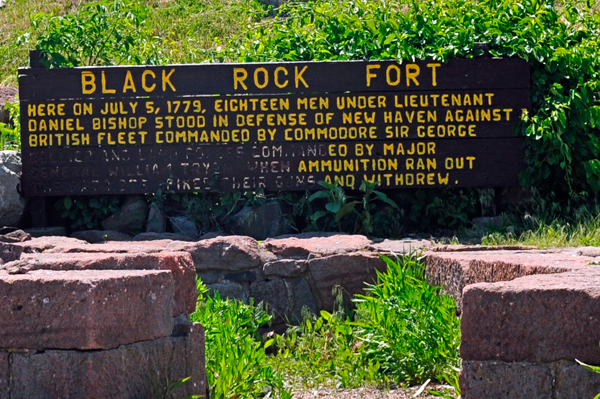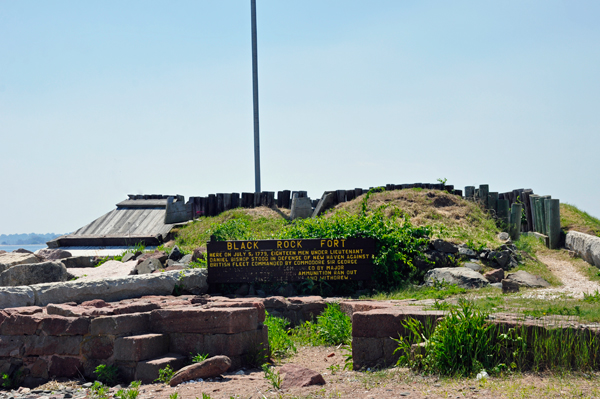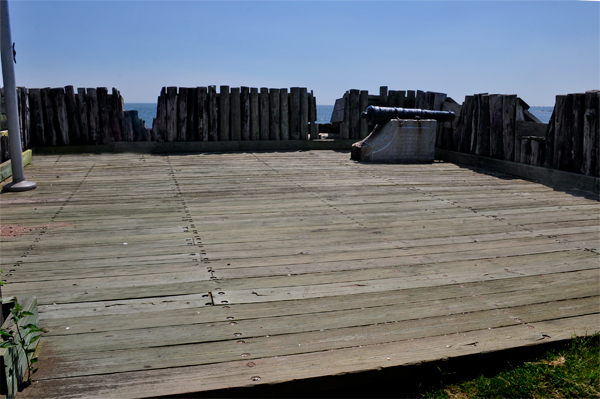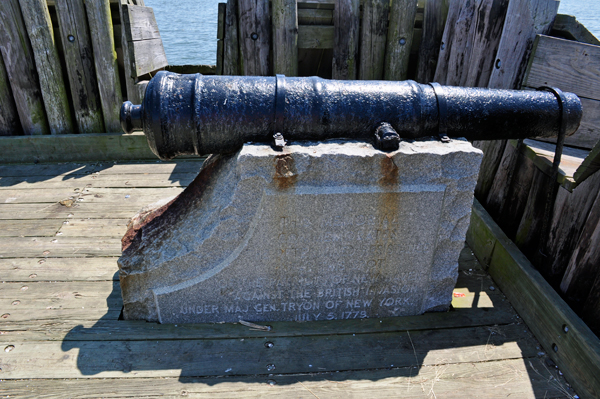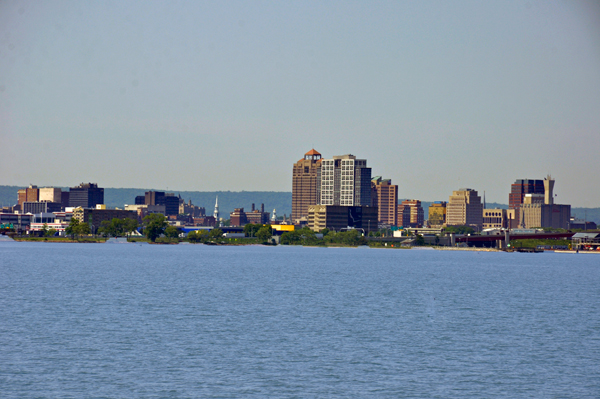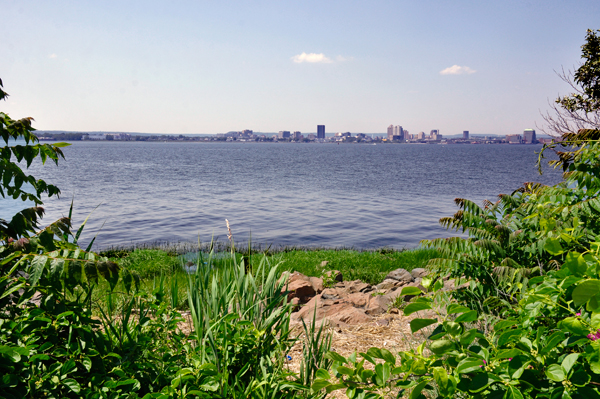| The
Two RV Gypsies: Full-Time RVers explored Fort Nathan Hale and Black Rock Fort Woodward Avenue New Haven, Connecticut June 12, 2017 |
||
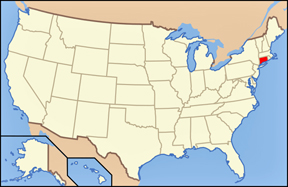 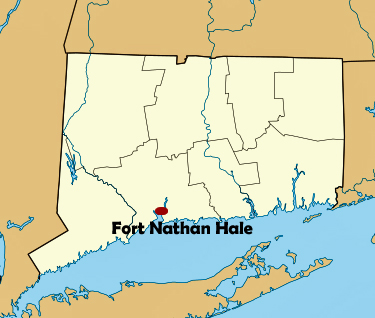 |
||
Below: A copy of the Nathan Hale statue by Bela Lyon Pratt that was dedicated at Yale University in 1914 (another copy of the statue stands outside CIA headquarters in Virginia). The statue depicts a young Hale, hands bound behind his back, just before being executed by British forces for espionage. |
||
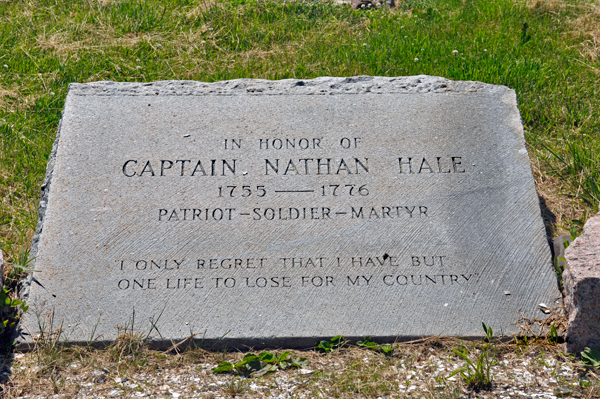 |
||
|
||
In addition to the reconstructed forts, the site features a memorial flag court with replicas of flags flown during the Colonial Era, the American Revolution, War of 1812, the Civil War, and today. Karen Duquette could only photograph 3 of the 5 flags shown above due to the position of the sun at the time. But a definition of each of the 5 flags shown above is written below as per the brochure at Fort Nathan Hale. |
||
 |
||
Cross of Saint George: The first English flag used in North America. It was flown by John Cabot in 1497 under the reign of King Henry VII. (In 1620, when the Mayflower landed in America, a new flag was used for the Colonies. King James took the Cross of Saint George and superimposed it onto the Scottish flag of Saint Andrew, calling it the King's Colors.) |
||
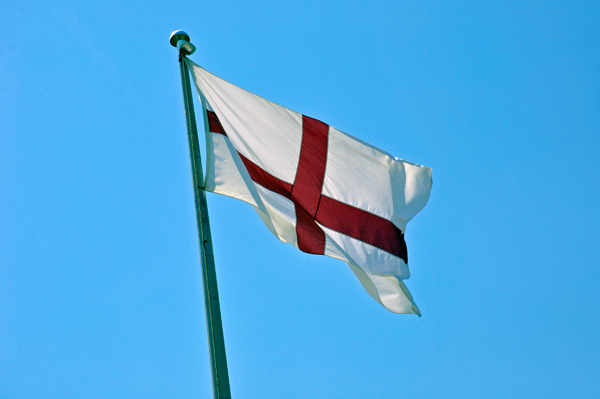 |
||
In 1776, the Colonies adopted the Thirteen Stripes representing the Thirteen Colonies, and kept the Kings Colors in the Canton (corner square) illustrating their allegiance to England, and their wiliness to fight for their rights and justice. George Washington personally raised this flag at Cambridge, Massachusetts as his men were advancing on the British in Boston. This flag is also call the Cambridge or Continental flag. |
||
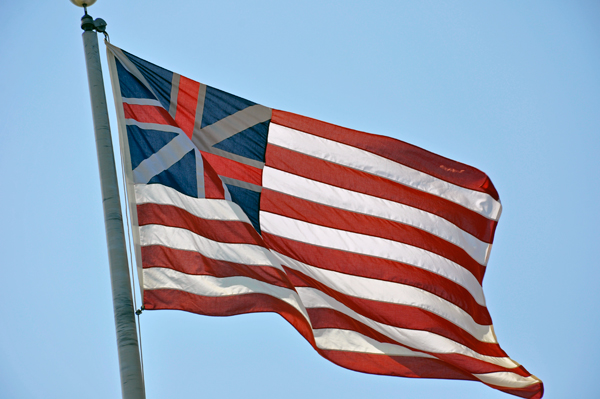 |
||
15 Star Flag: The 15 stars and strips was flown from 1795 to 1818. This flag was flown during the War of 1812 and during the United States War with the Barbary States. It was this flag that inspired Francis Scott Key to write the "Star Spangled Banner." It also inspired a heated debate in Congress over the number of stripes in the banner. |
||
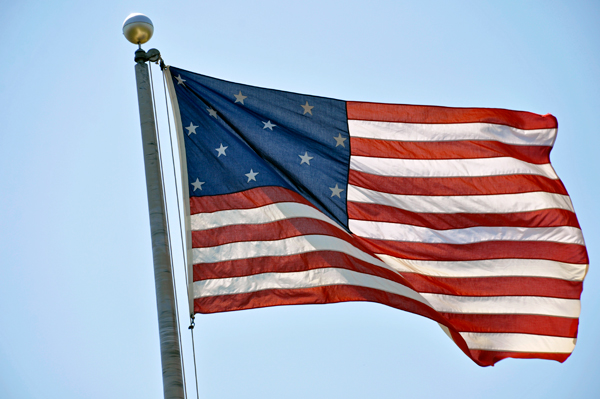 |
||
Between 1795 and 1818, five new States were admitted into the Union, and a new flag was needed. A Navy Captain redesigned the flag and returned to the 13 original Stripes but added a star for each new State. Congress adopted this idea and also stipulated that on July 4th, following the admission of a new state, a new star would be flown on the flag to represent that state. |
||
During the Civil War, the Union Forces used four official flags with 33, 34, 35, and 36 stars. The 36 star flag, the USA's 18th National Flag, was flown from 1865 to 1867. The Confederate States of America were in their last hours when Nevada was admitted to the Union as the 36th State. |
||
50 Star Old Glory: This flag with 50 stars has been flown since 1960. On March 18, 1959, Hawaii became the USA's 50th state and the last star in the flag up to the present time. |
||
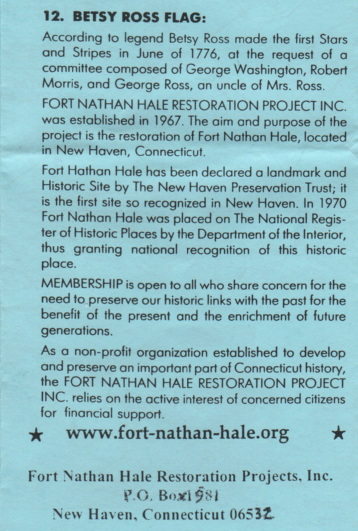 |
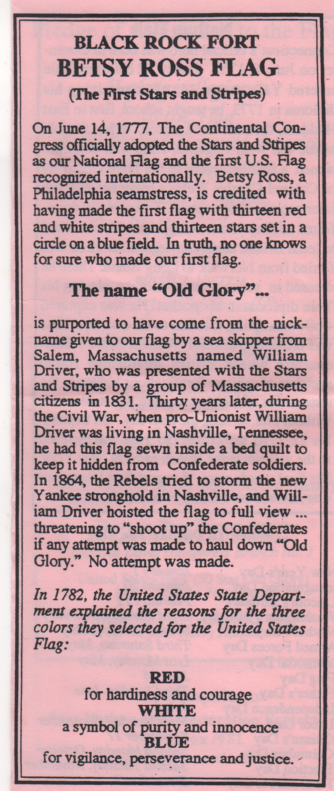 |
|
This is a National Historical Registered place. There was an “Unnamed Fort” here, built in 1657, according to the sign in the photo below. In 1775, Black Rock Fort was built but was demolished. Then, Fort Nathan Hale was built in 1807 but no trace of that fort remains. Then in 1863, a fourth fort, Fort Nathan Hale II, was built on the same piece of land as a defense against the Confederate Navy. The Rebels never made it to New Haven, however, so that incarnation never saw action. So it was demolished too. Eventually, the Fort Nathan Hale Restoration Project rebuilt Black Rock Fort, not Fort Nathan Hale. |
||
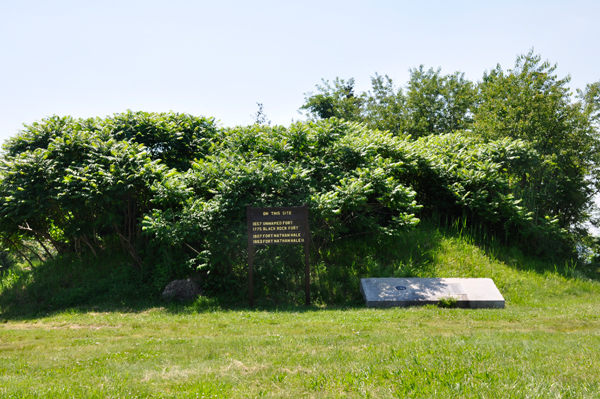 |
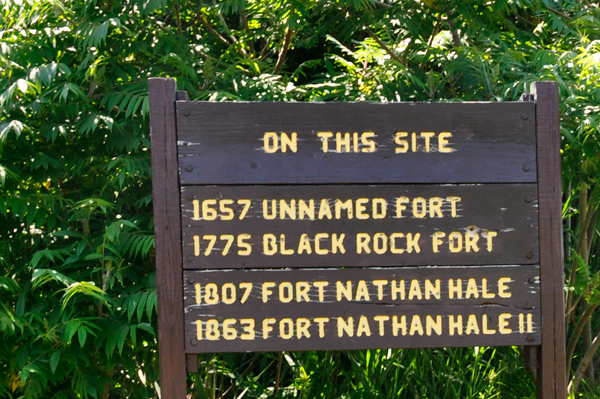 |
|
The Powder Magazine |
||
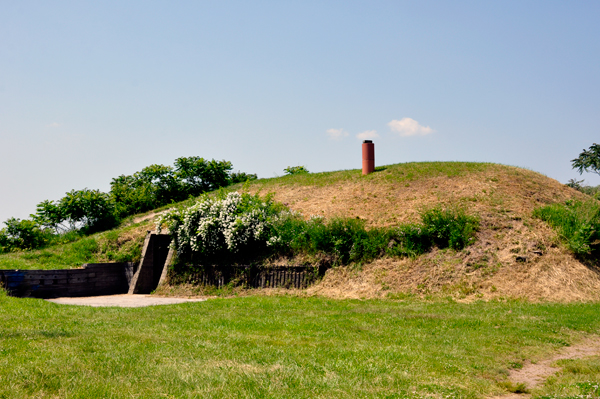 |
||
This Memorial Commemorates the determined resistance near this spot of the Patriots of New Haven against the British Invasion under Major General Tryon of New York, July 5, 1779. |
||
Below> View from Black Rock Fort |
||
The two RV Gypsies were not able to take the entire self-guided walking tour because they got there just a short time before the area and parking lot closed at 3 p.m. The fort is located right next to a U.S. Navel Reserve Station. They hope to return one day in the future. |
||
|
|||||||||||||||||||||||||||||||||||||||||||
|
|||||||||||||||||||||||||||||||||||||||||||
|
|||||||||||||||||||||||||||||||||||||||||||
|
|||||||||||||||||||||||||||||||||||||||||||
|
|||||||||||||||||||||||||||||||||||||||||||
|
|||||||||||||||||||||||||||||||||||||||||||
|
|||||||||||||||||||||||||||||||||||||||||||
|
|||||||||||||||||||||||||||||||||||||||||||
|
|||||||||||||||||||||||||||||||||||||||||||
|
|||||||||||||||||||||||||||||||||||||||||||
 |
|||||||||||||||||||||||||||||||||||||||||||
|
|||||||||||||||||||||||||||||||||||||||||||
| ||||||||||||||||||||||||||||||||||||||||||
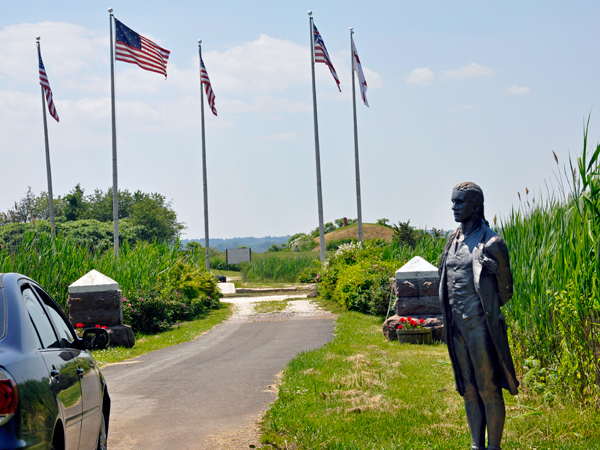
 In early 1776, the colony of Connecticut commissioned the construction of a fort on a rock that stretched out into the harbor to protect the port of New Haven from the British. This was the location of an earlier unnamed fort from circa 1657. Unfortunately for the colonists, in 1779 British General William Tryon, during his raid of Connecticut coastal communities, captured Black Rock Fort along with its nineteen defenders, but only after they had run out of ammunition. The British burned the barracks as they left. In 1807-1812, the abandoned fort was reconstructed with six guns as Fort Nathan Hale under the second system of US fortifications, and it served to defend the port from the British once again during the War of 1812. In 1863, Fort Nathan Hale II was built alongside the original fort, out of concern that Southern raiders might strike the city during the Civil War, but the fort saw no battle action. This fort contained deep, earthen, bomb-proof bunkers. Unusually, the fort was partially demolished after the war.
In early 1776, the colony of Connecticut commissioned the construction of a fort on a rock that stretched out into the harbor to protect the port of New Haven from the British. This was the location of an earlier unnamed fort from circa 1657. Unfortunately for the colonists, in 1779 British General William Tryon, during his raid of Connecticut coastal communities, captured Black Rock Fort along with its nineteen defenders, but only after they had run out of ammunition. The British burned the barracks as they left. In 1807-1812, the abandoned fort was reconstructed with six guns as Fort Nathan Hale under the second system of US fortifications, and it served to defend the port from the British once again during the War of 1812. In 1863, Fort Nathan Hale II was built alongside the original fort, out of concern that Southern raiders might strike the city during the Civil War, but the fort saw no battle action. This fort contained deep, earthen, bomb-proof bunkers. Unusually, the fort was partially demolished after the war.